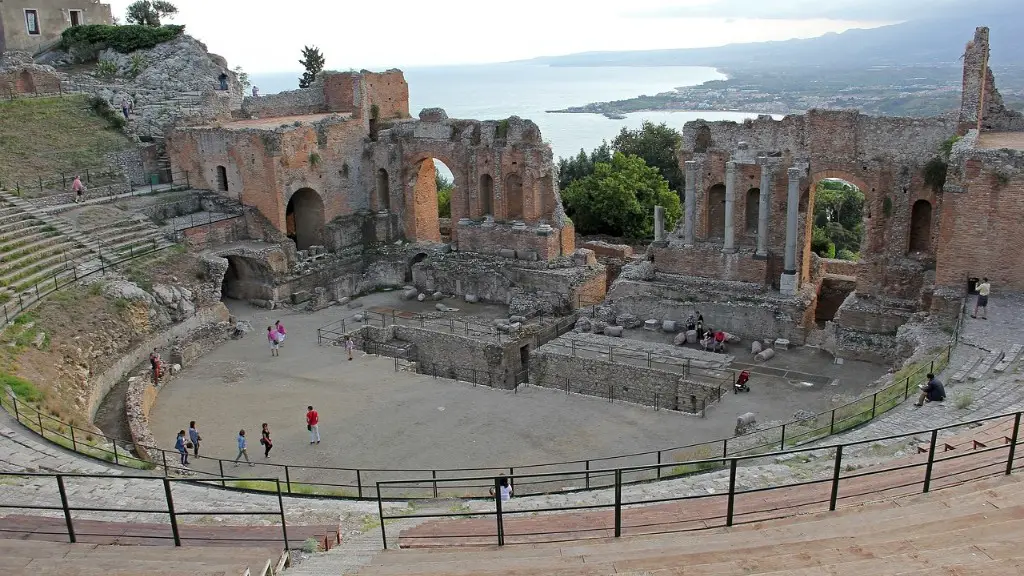Prisoners in ancient Rome were treated harshly, and often with great brutality. They were often imprisoned for crimes that we would now consider to be minor, and were often forced to endure very harsh conditions. Many prisoners were also forced to work in the mines or in other difficult and dangerous jobs.
Prisoners in ancient Rome were typically held in appalling conditions, with little to no food or water and poor sanitation. They were often subject to physical and sexual abuse, and many did not survive their ordeal.
What did Romans do to prisoners?
The Roman Empire did not have prisons that operated in the same way that modern prisons do. Instead, accused wealthy citizens were simply kept under house arrest until their trial could take place. Poor citizens generally found justice to be swift and usually fatal. This meant that there was a huge disparity in the way that different classes of people were treated by the justice system.
POWs were treated very harshly in ancient times. They were often killed outright, or used as slaves and tortured for amusement. This was because warriors considered death preferable to dishonor, and so POWs were held in contempt.
What was the usual punishment for prisoners during the Roman Empire
Whipping was a common punishment for slaves. They would be whipped with a whip or a piece of wood. Sometimes, they would be forced to wear wooden shoes that made it difficult to escape. An enslaved person could be forced to carry a piece of wood around their neck that stated their crime.
Crucifixion was intended to be a gruesome spectacle: the most painful and humiliating death imaginable. It was used to punish slaves, pirates, and enemies of the state. The victim was usually stripped naked and tied or nailed to a wooden cross. Death could take days, and the suffering was intense. The body was then left on the cross as a warning to others.
What was the most common crime in Roman times?
The main crimes during the Roman Empire were against property. This included crimes against a person’s wife, children, and slaves, as well as their house and possessions. Roman people also had to deal with many of the same crimes we face today, such as murder, arson, and vandalism.
For a Roman citizen, the most common mode of execution was beheading. Non-citizens, free or slave, were not so fortunate. There were several especially severe forms of execution called summa supplicia. Crucifixion (crusis supplicium) was generally reserved for non-citizens and slaves.
What was it like to be a prisoner in Rome?
The following is a note on prisons not having individual cells. Instead, prisons would have had groups of prisoners chained together in different rooms. This would often times make the prisons very crowded. The prisons were designed to psychologically and physically torture a prisoner into confessing.
Slavery was an brutal and inhumane practice that was unfortunately quite common in the Roman empire. Slaves were often mistreated, abused, and even killed by their owners with no repercussions. This led to some people, like the poet and philosopher Seneca, arguing that slaves should at least be treated fairly. Sadly, their cries fell on deaf ears and slaves continued to suffer under the cruel and tyrannical rule of their masters.
How would a Roman guard be punished if he fell asleep on duty
The fustuarium was a Roman military punishment for soldiers who fell asleep on duty. The condemned man was beaten with clubs and stones by the other soldiers, and usually killed.
Most slaves in Rome were captured during the many wars Rome fought against other nations. These prisoners were brought back to Rome and sold to slave traders. These slave traders would then sell the slaves in either open auctions or private sales.
Why did Romans crucify criminals?
Crucifixion was a widespread form of punishment in the ancient world. The Romans used this particularly brutal form of execution as a means of producing social conformity. Cicero, a Roman politician, described it as the “most cruel and hideous of tortures.” The bodies of the condemned would remain on crosses for days.
Violence was an integral part of Roman identity, and images of war and violence were pervasive throughout the Roman world. The myths and history of Rome are filled with brutal acts of rape, fratricide and war. Roman culture glorified violence, and it was seen as a necessary and noble part of life. War was seen as a way to bring glory and honor to one’s family and country, and it was a highly celebrated part of Roman society.
What was the most brutal Roman punishment
The ancient Romans were known for their brutal punishments for criminals. More severe crimes might receive a punishment of putting out the eyes, ripping out the tongue, or cutting off ears. The death penalty included being buried alive, impaling and, of course, crucifixion. The Romans did not hesitate to torture before putting someone to death.
Scaphism, also known as the boat, was a method of execution that was practiced in ancient Persia. The victim was tightly bound and then placed in a boat-shaped container full of milk and honey. The container was then placed in the sun, where the victim would be slowly crushed to death by the weight of the milk and honey.
Which Roman emperor was the most cruel?
Caligula is remembered as the cruelest Emperor because of his mental illness which led him to kill many Roman citizens, even his own family members. His mental illness was likely caused by syphilis, which he contracted early on in his rule. There was no one safe from his cruelty, as he was capable of killing anyone he pleased.
Adultery was not considered a serious crime in Ancient Rome, and was mostly dealt with by families. There were some cases, however, where women were brought to the aediles (magistrates who oversaw public order) for judgment. This was usually due to other crimes that were committed alongside the adultery, such as theft or slander.
Was adultery a crime in Roman times
A wife’s adultery was always a crime in early Roman law, but a husband’s adultery was only a crime if committed with married women. A wife committed adultery if she had a sexual relationship with any other man than her husband. This double standard meant that a husband could have sex with prostitutes or unmarried women without consequences, but a wife could not.
The ancient Romans had a very strict legal system, and crimes were punishable by death. Some of the worst crimes included kidnapping, adultery, arson, bigamy, forgery, incest, rape, sexual assault, theft and treason. These crimes were punishable by death, and the punishment was often very brutal.
Warp Up
There is no one answer to this question as ancient Rome was a very large and complex empire with a long history. Different periods of Roman history saw different methods and levels of treatment for prisoners. In general, however, Roman prisons were overcrowded, unsanitary, and dangerous places. Prisoners were often tortured and/or executed, sometimes for crimes as minor as stealing a loaf of bread. There are also reports of prisoners being used for entertainment, such as being forced to fight each other to the death in the Coliseum.
The ancient Romans had a very organized and structured way of dealing with prisoners. They would first assess what the prisoner had done and then decide on an appropriate punishment. Sometimes this would involve sentence to death, but other times it would involve a process of rehabilitation. The ancient Romans believed that every person had the potential to be reformed and that even prisoners deserved a second chance.





